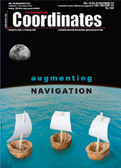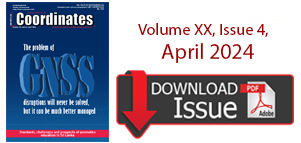
The European Union’s INfrastructure for Spatial InfoRmation in Europe (INSPIRE) initiative is ‘inspiring’ for two important reasons. First, because Directive 2007/2/EC of the European Parliament and of the Council entitled ‘An infrastructure for spatial information in the European Community (INSPIRE)’ (CEC2007) breaks new ground by establishing the legal framework for the creation of a European level spatial data infrastructure and, as a result, the governments of all 27 European Union national member states must modify existing legislation or introduce new legislation to implement its provisions by May 2009. Second, because of the procedures that have been devised for the creation of implementing rules that are generally acceptable to the European stakeholder community who will have to implement them in practice. With these considerations in mind this paper considers the contents of the INSPIRE Directive and discusses the principles underlying the procedures for the formulation of implementing rules.

GATE: A boon for Galileo
Dr. Guenter Heinrichs, Erwi n Loehnert, Elmar Wittmann, Roland Kaniuth
GAGAN Updates
Arjun Singh
Through a scanner, darkly
John Kelly
Galileo is necessary
Dominique Detain
Japan: Augmenting navigation
Akio Yasuda
Inspiring’ INSPIRE
Ian Masser
Estimates of Anomalies in Triangular Area between GPS stations
Sridevi Jade, Saigeetha A J, Vijayan M S M
A strategic approach to data sharing
Mansour Ahmadi Foroushani

MSAS (MTSAT Satellite-based Augmentation System is the Japanese satellite based augmentation system which has been prepared by the Civil Aviation Bureau of Ministry of Land, Infrastructure, Transport and Tourism (MILT) and started on 27 September 2007, to serve for improving accuracy, integrity, and availability of GPS positioning on the civil aircrafts. It has two geostationary satellites, called MTSAT-1R and MTSAT-2 located at 140 and 145 degrees in the east longitude, on the orbit of 3600km above the Equator. The satellites were launched in February of 2005 and 2006 respectively, long after the launch failure on November 1999. MTSAT, which stands for Multi-functional Transport SATellite, also has a function of geostationary metrological satellite.

Europe is building its own global satellite navigation system, Galileo, which will offer very accurate positioning and timing, under civilian responsibility. This system will be compatible with the two other existing systems, GPS and GLONASS. A user will be able to use the same receiver to calculate his position from signals sent out by any satellites combination, however Galileo will offer to all users a bi frequency system that will allow knowing position within one meter of accuracy, which is unprecedented for an openly accessible service. Apart from extreme circumstances, it will always be available and its users will be informed in a few seconds of a potential disruption of one of the satellites. Thus it will be usable for safety of life applications, requiring the highest security level, such as plane landing, train circulation or car guidance.

Any look into the crystal ball of (even the near) future is fraught with caveats, error, and less than perfect clarity. However, certain extrapolations and not-so-wild guesses do exist.
GNSS, General – Existing (and near term proposed) systems will continue to expand, receive modernization support, and move (slowly) towards increased interest in securitizing systems and data utilized in the GNSS sourceto- user “food chain”. Nationalism of systems and (at least regionalism of) augmentation sources will progress.

Volume VI, Issue 7, July 2010
Zip
GNS What next?
F Michael Swi ek, Miguel Angel Martínez Olagüe, Bruce Peetz, Keith D McDonald, Bernhard Richter, Ir. Hans Viss er, John Pottle, Thom as Seiler, Sang Jeong Lee
Tsunami three years down the line
Prem Shanker Goel, Prof Tad S Murty, Rehabiliation and reconstruction bo ard, Indo …

There are lots of needs for a unified platform that allows efficient GNSS (Global Navigation Satellite System) receiver development and testing for various applications. With the current functionality of the GPS constellation and the promise of the future Galileo constellation, many efforts have been focused on the 1575.42MHz L1 signals for the GNSS software receiver implementation. GPS (Global Positioning System) L1 or Galileo E1…

The tools of GI Science deal with geospatial information in which spatial relationships are the fundamental data. Fundamental data is that which relates to geolocation or spatial data that will permit the mapping of any object in terrestrial space. But, GI Science may also handle a diverse range of personal information from the truly ‘personal’ ones through to those of a more general nature – age, gender, height, home address, social security number…

Prem Shanker
Goel is Secretary to the Government of India,
Ministry of Earth Sciences (MoES).
India has recently launched the National Tsunami Early Warning System (TEWS) established by Ministry of Earth Sciences. Coordinates discussed various aspects of the TEWS with Dr P S Goel, Secretary to the Government of India, Ministry of Earth Sciences
Who can forget December 26, …
In looking ahead at what milestones we may expect to see during 2008 in the world of GPS and GNSS it is easy to be caught at one of two extremes. The first extreme would be to make the mistake of the shortsighted person who in the late nineteenth century proposed that the US Patent Office should be closed because everything conceivable had already been invented. The other extreme would be to look ahead at the promise of new constellations…







 (5.00 out of 5)
(5.00 out of 5)